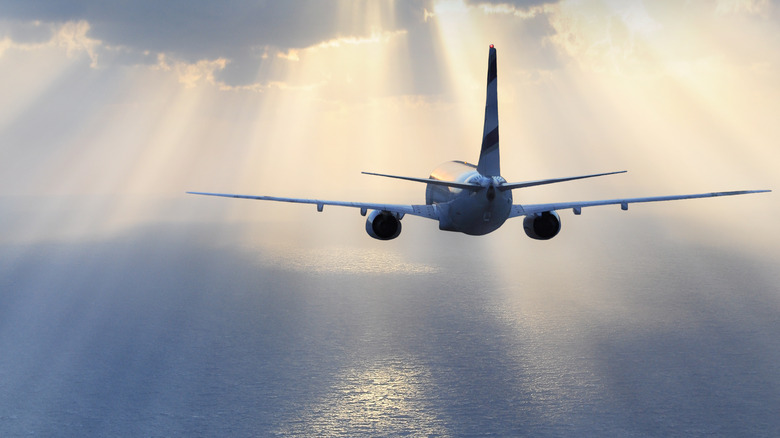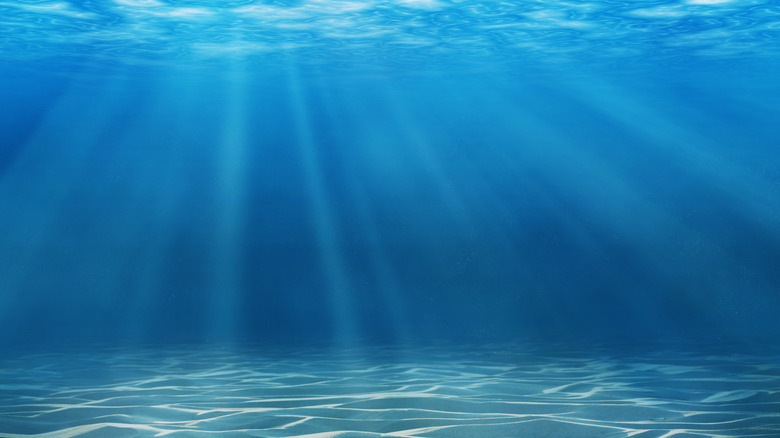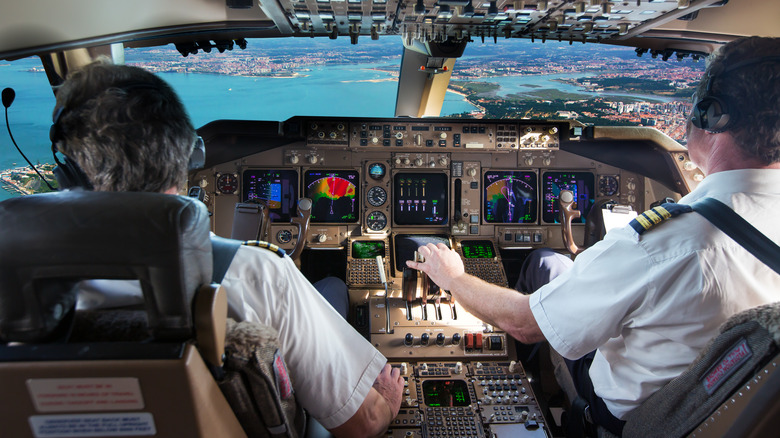Do Pilots Actually Avoid Flying Over The Bermuda Triangle? Here's What Our Expert Says
Just off the coast of southeastern Florida, the Bermuda Triangle encompasses a large area of the Atlantic Ocean that has been a legendary source of myths and mysteries for centuries. Stories persist about mariners and their ships lost at sea, or planes that passed overhead, never to be seen again. Mysterious magnetic forces, giant tidal waves, and even mythical whirlpools have been rumored to bring down boats and planes that came near the area between Florida, Puerto Rico, and Bermuda. What is the truth about this mysterious part of the ocean, and do these stories actually influence a pilot's choice to fly over this area? In an exclusive interview, Explore spoke with Captain Richard Levy, a seasoned professional pilot who has often had to decide whether to cross the Bermuda Triangle on his journeys.
Captain Levy was a pilot for a major U.S. international airline for over 40 years, where he consistently followed routes that crossed the North Atlantic, North Pacific, and Polar regions. Following his retirement, he has been serving as a simulator and classroom instructor. He is also a highly regarded consultant, where he provides expert testimony in aviation litigation and insight through media interviews on aviation topics. He shares his perspective on the reputation of this legendary part of the ocean and the impact it has on professional aviation and navigation.
Facts and fiction surrounding the Bermuda Triangle
The Atlantic Ocean reaches its greatest depth at a point within the Bermuda Triangle, at 27,493 feet below the surface. This fact enhances the mystery of this region, with some fanciful stories even suggesting that the lost city of Atlantis could be nearby. Captain Levy acknowledges how the Bermuda Triangle acquired its reputation. "Writers have described, in detail, stories of ships and airplanes that transited the Bermuda Triangle only to mysteriously disappear," he says. However, he shares his professional opinion of these tales. "The stories are fascinating and make for great movies, but the truth of the matter is there are a number of inconsistencies and inaccuracies from witnesses reporting on such incidents," he explains. In fact, Levy contends that the number of airplanes and ships that have gone missing in the Bermuda Triangle is not any different from the number of incidents that have taken place in similar areas of the world.
Levy reveals that many of the stories that perpetuate the myths depend on evidence that is later proven to be untrue. "Sometimes writers have claimed that large storms swallowed up an aircraft or a ship on a particular date, when later on it was determined the weather on the reported date was calm," he says. "Or some ship, which sailed through the Bermuda Triangle, is reported missing only to show up on some later date in a port or docked in a harbor."
Professional opinions about the risk
While the stories create an aura of mystery around the Bermuda Triangle, they never influenced his decision as a pilot to travel through the region. Levy explains that he flew across this area with regularity. "As a retired airline Captain from a large international airline, I could not begin to count the number of times I flew through this area," Levy observes.
In fact, although the Bermuda Triangle's reputation is quite vivid, Levy explains that its existence is actually undefined in professional aviation guidelines. "Our Flight Operations Manuals have zero words of caution about the airspace in and surrounding the so-called Bermuda Triangle," he states. Levy claims this principle holds true in his current position as an instructor as well. "Now retired, I am a simulator and classroom instructor at another large, major airline. Ditto here: the Flight Operations Manuals have not a word of risk or caution about flight through the Bermuda Triangle."
Levy points out that this position is also held by pilots from other international airlines. Because he speaks German, he says he has consulted with other pilots who fly for European airlines about their choice to travel across the Bermuda Triangle. When he's asked them about any precautions they take, he says, "None of these very experienced airline captains ever mentioned concern, caution, or worry about flying through the airspace of the Bermuda Triangle."
No hesitations about a trip
To allay any concerns that travelers could still have about traveling through the Bermuda Triangle, he notes that other professional entities are also unconcerned about any voyages that cross the area. Levy asks, "Finally, what does the massively successful and prestigious maritime insurer Lloyd's of London say when asked if an unusually considerable number of ships have sunk in the waters of the Bermuda Triangle area?" He states, "Simple answer: large numbers of ships have not sunk there." He goes on to point out that there is no difference when it comes to the need for additional insurance in this area. "Neither higher premiums nor higher rates are charged by Lloyd's of London for insured ships that pass through the Bermuda Triangle," he explains.
Finally, Levy has some words of encouragement for anyone who may still be hesitant about crossing this legendary stretch of ocean. He says, "Bottom line: enjoy the stories, but don't allow the hype to ruin your enjoyment of your flight across the Atlantic if the route happens to enter the airspace known as the Bermuda Triangle." He explains that the same is true for those who cross this space on a vacation cruise. "Likewise, if you are on any type of cruise through the waters of the Bermuda Triangle, enjoy yourself, enjoy the entertainment, enjoy the dining," he says. But he emphasizes, "Most importantly, relax knowing that the mystery of the Bermuda Triangle is only a fun myth."



